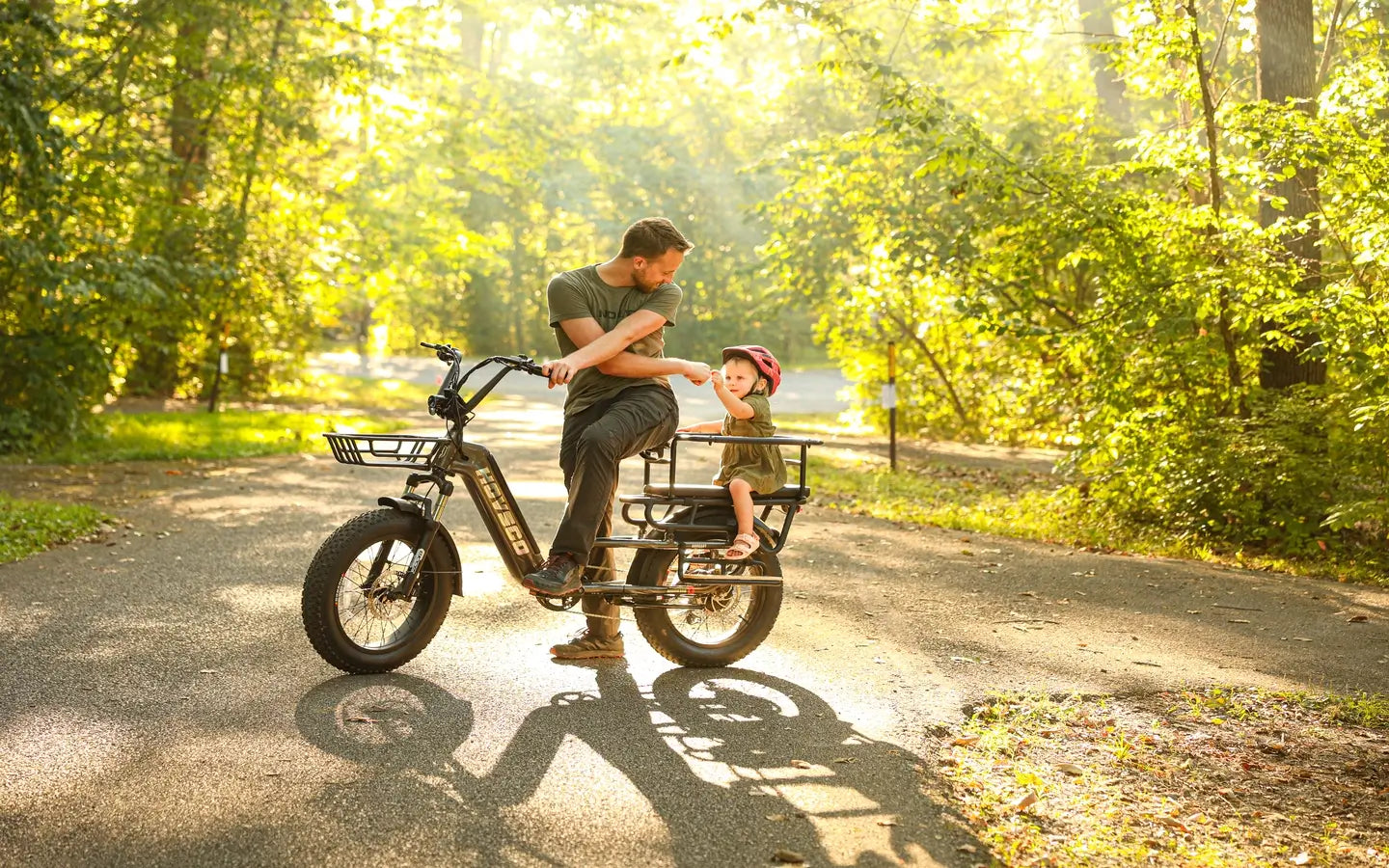
- by LiuJiazhu
What Accessories Are Essential for Long-Distance E-Bike Touring and Commuting?
- by LiuJiazhu
For long-distance e-bike touring and commuting, essential accessories prioritize safety, comfort, and practicality. Key items include a certified helmet for crash protection, weatherproof gear (rain jackets, gloves), hydration systems, ergonomic seating, navigation tools, and theft-prevention locks. These accessories enhance rider safety, reduce fatigue, and ensure adaptability to changing conditions during extended rides.
A certified bicycle helmet is the cornerstone of safety, reducing head injury risks by 70% in crashes. Look for multi-impact EPS foam liners and MIPS rotational protection in helmets meeting CPSC/CE standards. High-visibility rain jackets with sealed seams ensure visibility and dryness during downpours. Why risk preventable injuries when proper gear exists?
Full-finger cycling gloves with silicone palm grips prevent blisters and improve control, especially crucial for e-bikes reaching 25 km/h. Consider gloves with touchscreen-compatible fingertips for navigation adjustments. Reflective ankle straps add 360° visibility—a simple upgrade that makes riders 2.5x more noticeable to drivers at night.
Ergonomic seat cushions with gel-infused memory foam reduce pressure points, while breathable 3D mesh covers prevent saddle sores. For touring e-bikes with 80+ km ranges, suspension seatposts absorbing 30% of road vibrations become invaluable. Have you ever abandoned a ride due to numb extremities? Proper seating solves this.
Adjustable stem risers enable upright riding postures, reducing neck strain. Pair these with ergonomic grips contoured to hand anatomy. For winter commuting, heated grips maintaining 35-40°C prevent finger stiffness. Remember, comfort directly impacts endurance—fatigued riders make riskier decisions.
| Feature | Basic Seat | Premium Touring Seat |
|---|---|---|
| Shock Absorption | 10-15% | 25-30% |
| Ventilation | Non-perforated | 3D Airflow Channels |
| Water Resistance | Low | Quick-Dry Fabric |
Dedicated bike computers like the Bryton Rider 750SE offer 40-hour GPS tracking with route-planning overlays—essential when exploring unfamiliar trails. Their 2.8" touchscreens remain readable in direct sunlight, unlike smartphones that overheat or dim. Preloaded regional maps prevent cellular dead zones from stranding riders.
Handlebar-mounted phone holders must have quad-lock damping systems to protect devices from vibration damage. Waterproof cases with anti-glare screens ensure navigation continuity during storms. For group tours, Bluetooth-enabled intercom helmets enable real-time communication without removing hands from controls.
U-locks with 14mm hardened steel shackles resist angle grinder attacks for 5+ minutes—the critical window deterring most thieves. Pair them with motion-sensing alarms emitting 120dB alerts when tampered. GPS trackers hidden in frame tubes provide recovery assistance, with some insurers offering 15% premium discounts for installed units.
Cable locks suffice for quick coffee stops but fold under bolt cutters within seconds. Prioritize locks rated Sold Secure Gold or Diamond. Remember, e-bikes’ high theft appeal demands layered security: lock the frame and wheels to immovable objects using two different lock types.
Frame-mounted panniers with 20-30L capacity maintain center gravity, preventing handlebar wobble at speeds. Look for waterproof roll-top designs with quick-release mounts. Handlebar bags with transparent phone pockets allow navigation checks without stopping—a game-changer when averaging 20 km/h.
For commuters, rear racks supporting 25kg enable grocery stops. Use bungee nets with silicone hooks to secure irregular loads. Avoid backpacks—they increase sweat and shift weight unpredictably during sharp turns. Ever struggled with a swinging grocery bag? Proper storage eliminates this hazard.
| Type | Capacity | Best Use |
|---|---|---|
| Panniers | 20-40L | Multi-day tours |
| Frame Bag | 5-10L | Tools/repair kits |
| Handlebar Bag | 3-5L | Phone/wallet access |
LED headlights with 1000+ lumen output illuminate 30m ahead at 25 km/h—critical for spotting potholes. Rear lights using COB chips create 180° visibility, while wheel-mounted spoke lights make riders identifiable from side angles. Why be a ghost on the road when lights cost less than a dinner?
Reflective tire sidewalls and jacket piping enhance passive visibility. For foggy conditions, amber fog lights cut through mist better than white beams. Dynamo-powered lights ensure unlimited runtime, crucial for tours exceeding battery-powered light durations.
Yes—they reduce spinal impact from urban potholes and curbs, preventing chronic back pain during daily rides.
Can I use regular gloves for e-bike touring?No—cycling gloves have padded palms absorbing handlebar vibrations, crucial for preventing nerve compression during long rides.
Share:
What Charging Practices Prolong Long-Range eBike Battery Life?
Which Long-Range Electric Bikes Suit Commuting and Off-Road Use?